Choosing the right mobility aid for your child can feel daunting, but it’s a step that can transform their life. These assistive devices improve movement, build confidence, and promote independence.
This guide will walk you through the essentials, explore the most common aids, and offer practical tips for safety and success. By the end, you’ll feel confident in choosing the right mobility aid to meet your child’s needs.
Key Takeaways
- Mobility aids, like pediatric walkers and mobility scooters, help children build independence and confidence.
- Common options include gait trainers, rollators, wheelchairs, and adaptive strollers, each designed for specific needs.
- Safety depends on proper fitting, regular maintenance, and creating an accessible home environment.
- Pediatric home care services provide expert support, from therapy to ongoing equipment adjustments.
Common Types of Mobility Aids for Children
Children with special needs may benefit from several devices designed to meet their unique needs. These mobility products improve movement, balance, and confidence, making it easier for your child to navigate daily life. Here’s an overview of the most common options:
Walkers
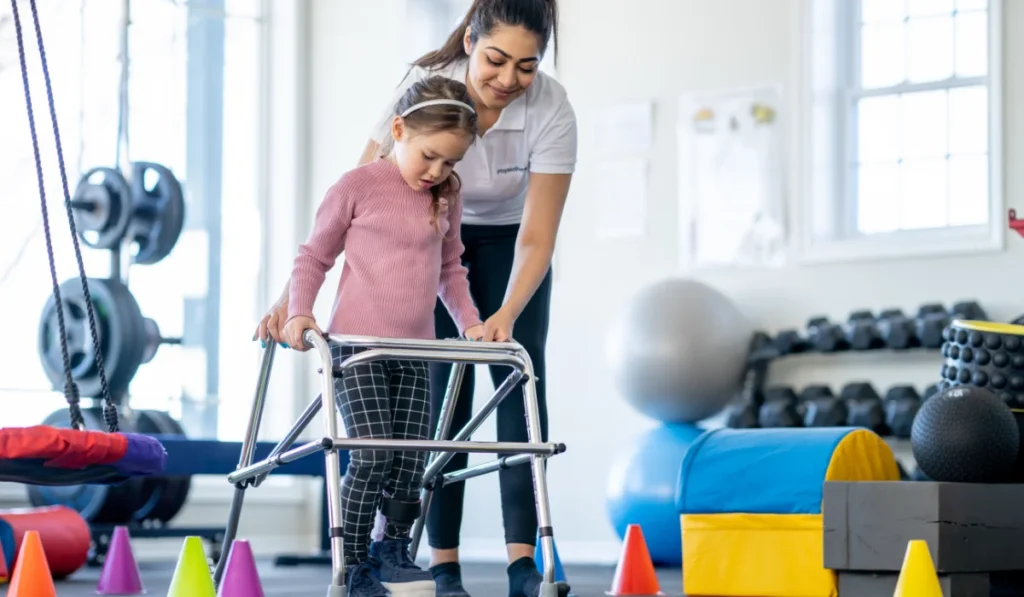
Pediatric walkers are ideal for children who need extra support to walk steadily. Options include front-wheeled walkers, four-wheeled walkers, and height-adjustable posterior walkers, which promote better posture and alignment.
Rollators, a walker style with wheels and brakes, are also popular for increased mobility and control.
Crutches
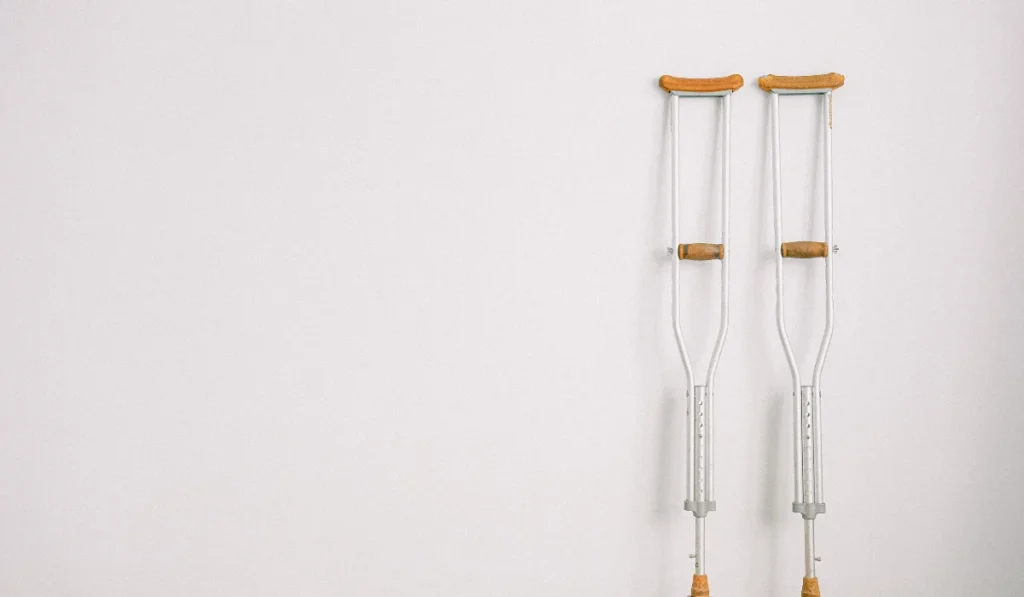
Lightweight and adjustable, crutches are great for temporary or long-term use. They provide stability for children with lower-body impairments and allow for independent movement.
Adjustable models grow with your child, making crutches a flexible and reliable choice.
Wheelchairs
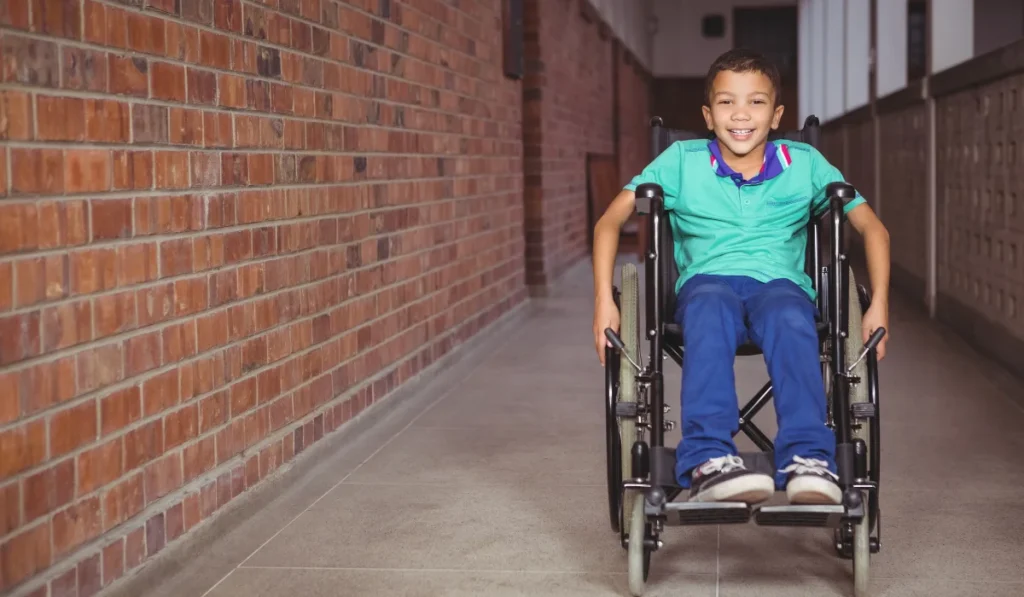
Wheelchairs offer mobility for children who cannot walk or need substantial support. Pediatric options include reclining wheelchairs for comfort, lightweight manual models, and power wheelchairs for added independence.
Foldable designs make transport simple, and features like height adjustability and backrest support ensure long-term usability.
Canes
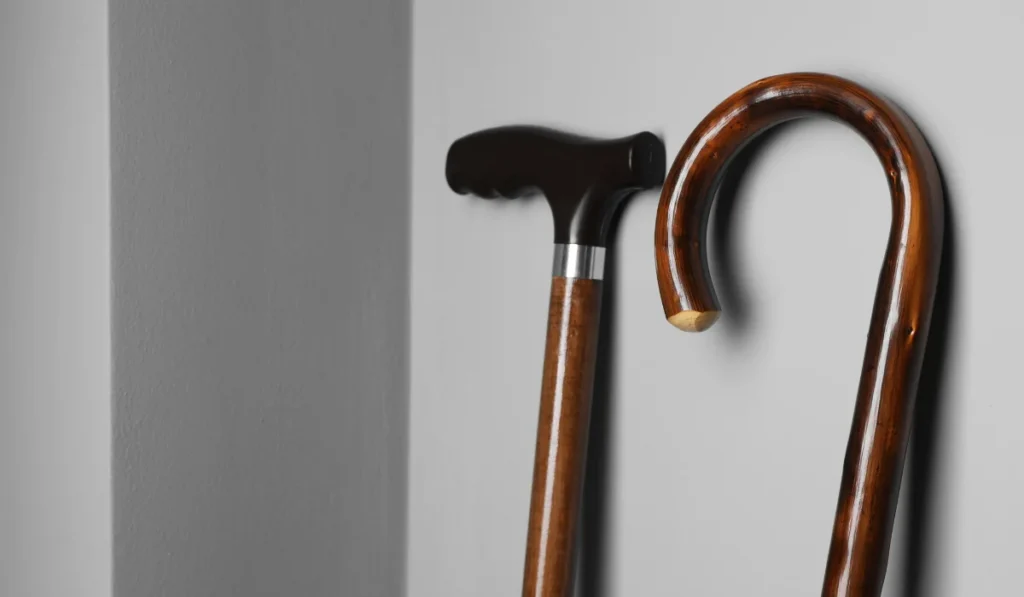
Canes are straightforward walking aids for kids who need minimal balance assistance. They’re particularly useful for children with mild cerebral palsy or minor stability issues. Adjustable designs allow the cane to grow with your child, ensuring a comfortable fit over time.
Orthotic Devices
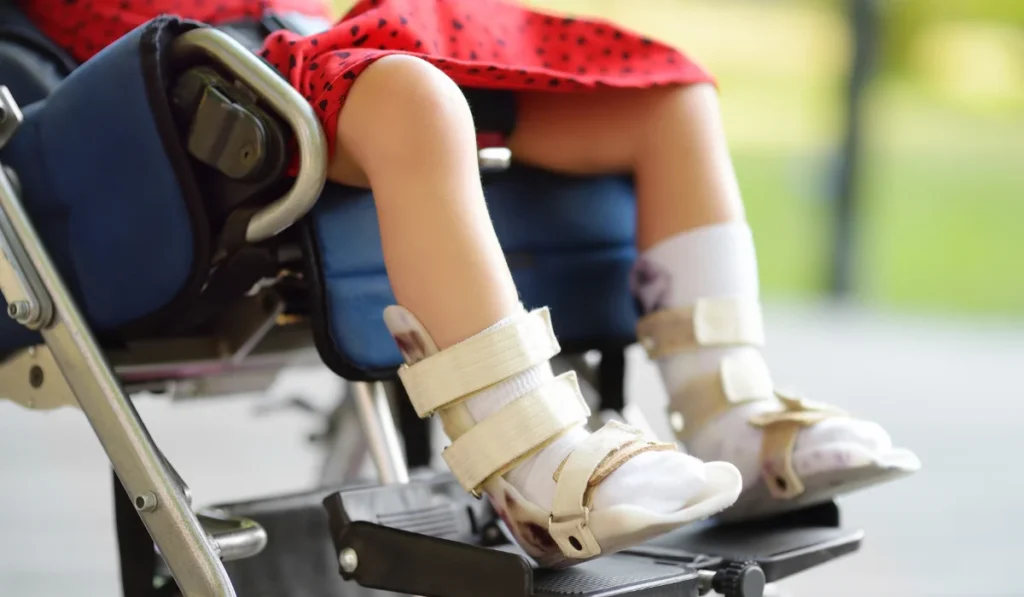
Orthotic aids, such as braces and splints, improve posture, gait, and alignment. These devices are often used alongside other mobility aids to provide additional stability and comfort during daily activities.
Gait Trainers and Adaptive Strollers
Gait trainers help children develop their stride and improve walking skills. Adaptive strollers are designed for children requiring more support than a standard stroller can provide. They’re especially helpful for outdoor adventures and transitioning between daily living spaces.
Remember, each mobility aid is tailored for specific challenges and goals. But by understanding your child’s abilities and daily needs, you can choose the tool that best supports their independence and confidence.
Getting Started
Introducing a mobility aid to your child can feel like a big step, but thoughtful preparation makes the process much smoother.
Step One
Consult with a pediatric expert of some kind or physical therapist. They’ll evaluate your child’s needs and recommend the most suitable option, whether it’s a rollator for improved mobility, a car seat for additional support, or another assistive device. This expert input ensures you’re starting with the right tools.
Step Two
Once you’ve chosen a device, proper fitting is crucial. Mobility aids that are height adjustable and tailored to your child’s size provide both safety and comfort. Many pediatric products, such as slings and adaptive strollers, are designed to grow with your child, making them a long-term solution as your child develops.
Step Three
Practice. Training sessions with a physical therapist can help your child become familiar with their device. Consistent practice not only builds confidence but also equips your child with the skills needed for greater independence.
Luckily, with the right approach, a mobility aid can be a life-changing tool for your child’s growth and freedom. Also, look into Medicaid for children as that can help you with the cost of mobility devices and more.
Safety Tips for Using Mobility Aids
Safety is essential when it comes to mobility devices. Proper use and regular maintenance help prevent accidents and keep your child comfortable. Follow these tips to ensure your child’s mobility aid is safe and effective:
- Inspect regularly for maintenance issues: Check for loose screws, worn-out wheels, or any damaged parts. Whether it’s a reclining wheelchair, a rollator, or a foldable walker, regular inspections ensure the device remains reliable and safe.
- Ensure proper positioning and adjustments: A mobility aid that doesn’t fit well can cause strain or discomfort. Make sure devices like canes, crutches, or strollers are adjusted to match your child’s height and posture for optimal support.
- Clear pathways and create accessibility: Remove potential hazards such as rugs, cords, or clutter. Adding ramps and ensuring wide, open pathways make it easier for your child to navigate the home, especially if they use a mobility scooter or other larger device.
- Supervise when needed: Encourage your child’s independence but provide assistance in new or challenging environments. As they become more comfortable and confident using their device, you can gradually reduce supervision.
Do your best to follow these tips. These simple steps go a long way in ensuring your child’s safety and comfort as they navigate daily life with their mobility aid.
How to Encourage Independence and Confidence
Using a mobility aid can be life-changing for children, but it may also come with emotional challenges. Taking the right approach can help your child feel confident, capable, and in control of their mobility journey.
Celebrate Progress and Build Routine
Focus on what your child can do with their mobility aid, no matter how small the success. For example, praise their progress as they use a gait trainer to take extra steps or enjoy a day out with their adaptive stroller.
Making the device a regular part of their daily routine helps it feel familiar and natural, building their confidence over time.
Involve Them in Choices and Set Goals
Encourage your child to personalize their mobility aid. Letting them choose fun colors or add stickers to their wheelchair or strollers makes the device feel like it’s truly theirs.
Always set achievable goals, like mastering the safe use of a rollator or navigating through the bath independently. And try to celebrate each milestone, no matter how small, to keep them motivated and engaged.
Your patience, positivity, and consistent support go a long way in helping your child embrace their mobility aid and grow more confident with each step.
Navigating Challenges
Building independence and confidence with a mobility aid is a rewarding journey, but it’s not without challenges. Addressing these early can help your child adapt more smoothly and feel supported every step of the way.
Social and Emotional Concerns
Children with disabilities may feel self-conscious about using mobility devices like crutches or strollers, especially around peers. Open, honest conversations can make a big difference. Reassure your child that their aid is a tool for empowerment, not something to be embarrassed about.
You can also share stories of inspiring role models who use mobility aids, and encourage inclusive activities where they can feel valued and accepted.
Adapting to the Environment
A safe and accessible home environment is key to promoting independence. Consider adding ramps, grab bars, or clearing pathways to make movement easier. For daily living tasks, devices like commodes or foldable scooters can enhance your child’s ability to move and manage independently.
Also, when planning outings, research accessibility features like elevators, parking, or ramps to minimize stress and ensure a smooth experience.
Finally, keep in mind that flexibility is essential as your child grows and their needs change. Regularly reassessing their mobility aid and making adjustments when necessary will ensure it continues to meet their goals and help them thrive in any environment.
Resources and Pediatric Home Care Services
Having the right resources can make all the difference for families navigating pediatric mobility. Home care services provide expert support to help your child thrive.
With ongoing support, home care services adapt to your child’s evolving needs, ensuring they always have the right tools and guidance to succeed. These services not only enhance your child’s mobility but also bring peace of mind to your entire family.